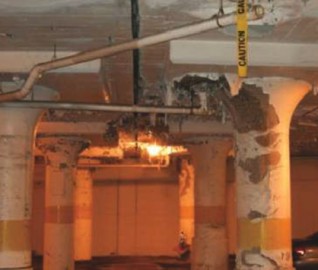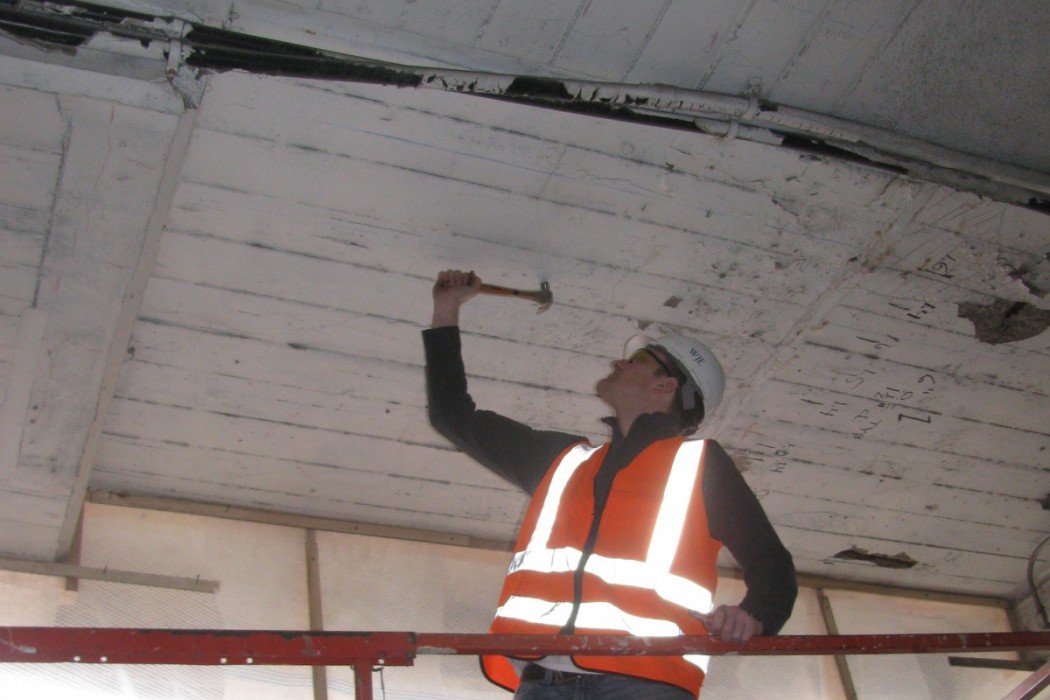WJE PROJECTS
Union Depot


CLIENT |
URS Corporation |
LOCATION |
St. Paul, MN |
Investigation of Existing Track Deck Structure
The Ramsey County Regional Railroad Authority sought to rehabilitate and expand the depot into a multimodal transportation hub to accommodate Amtrak and local light rail, intercity and transit buses, taxis, and bicycles, with plans for future high-speed rail service. However, the deck exhibited varying degrees of deterioration, and timber pile decay was suspected. URS Corporation, engineer of record for the design-build team, retained WJE to assess the existing track deck structure, associated retaining walls, and their timber pile foundations.
BACKGROUND
The historic Union Depot railroad terminal was constructed from 1917 to 1926 along the Mississippi River in downtown St. Paul, Minnesota. The sprawling 250,000-square-foot elevated concrete track deck includes approximately six hundred 21-square-foot bays, supported by approximately six hundred concrete columns and nine thousand timber piles.
SOLUTION
WJE assessed the condition and structural capacity of the existing elements via in situ and laboratory testing; load rated the existing structures relative to the anticipated design loads; and developed repair strategies for the concrete structures and timber piles. Concrete deterioration, especially along the deck expansion joints and at column bases, was found to be advanced but repairable. Analysis and load testing demonstrated that the repaired deck could support the desired train loads. Of approximately sixty timber piles exposed in four large test pits, advanced decay was found at the tops of several. Still, based on field load testing of select piles, pathological examination of wood cores, laboratory testing of full-size partially decayed pile sections, testing of small clear wood samples, and Monte Carlo analytical simulation of pile group capacity, WJE was able to demonstrate that piles in the northern two-thirds of the site should have adequate residual capacity for the desired loads over the fifty-year service life.
RELATED INFORMATION
-
 Our materials scientists provide comprehensive consulting services for the evaluation and... MORE >Services | Materials Evaluation and Testing
Our materials scientists provide comprehensive consulting services for the evaluation and... MORE >Services | Materials Evaluation and Testing -
 We provide clients with accurate, actionable answers through a spectrum of in situ load testing... MORE >Services | Structural Load Testing
We provide clients with accurate, actionable answers through a spectrum of in situ load testing... MORE >Services | Structural Load Testing -
 Unique approach used to assess the concrete superstructure and timber pile foundations MORE >Articles | Revitalization of a Historic Concrete Train Depot
Unique approach used to assess the concrete superstructure and timber pile foundations MORE >Articles | Revitalization of a Historic Concrete Train Depot







































